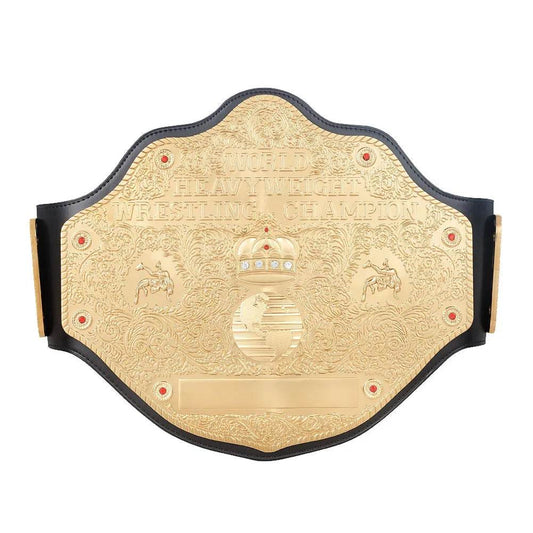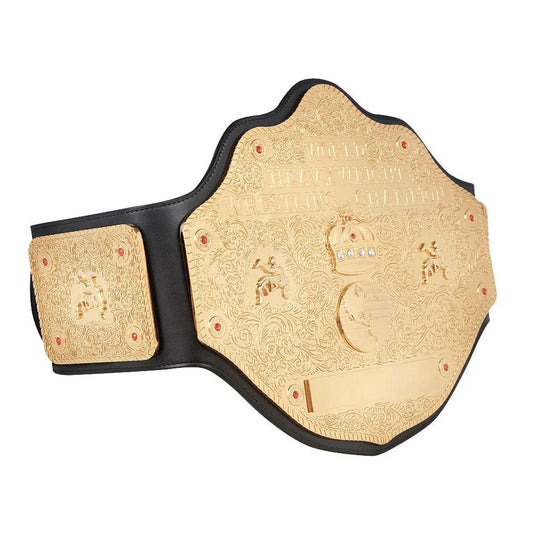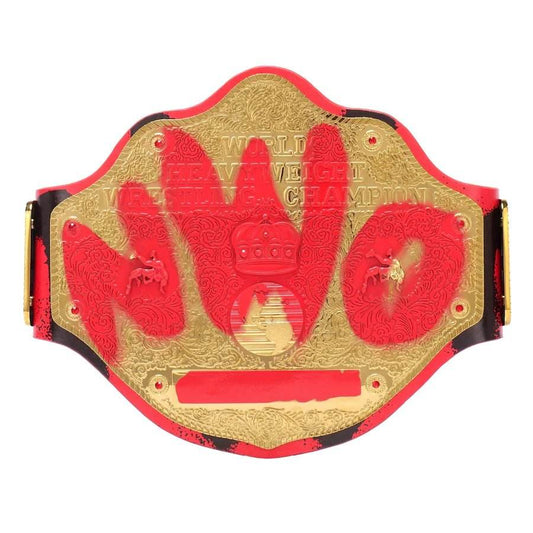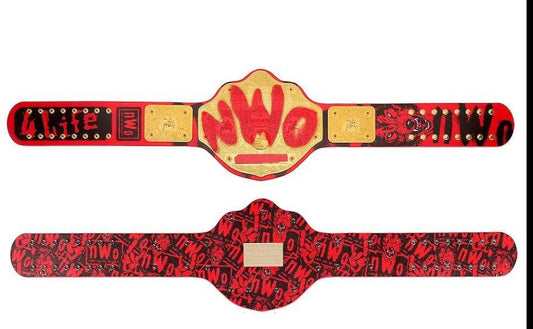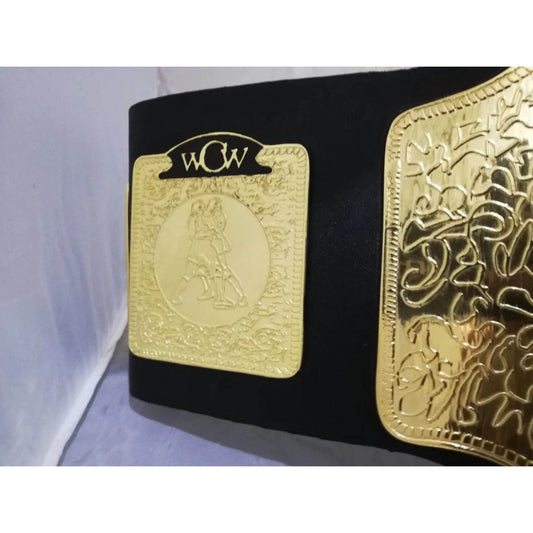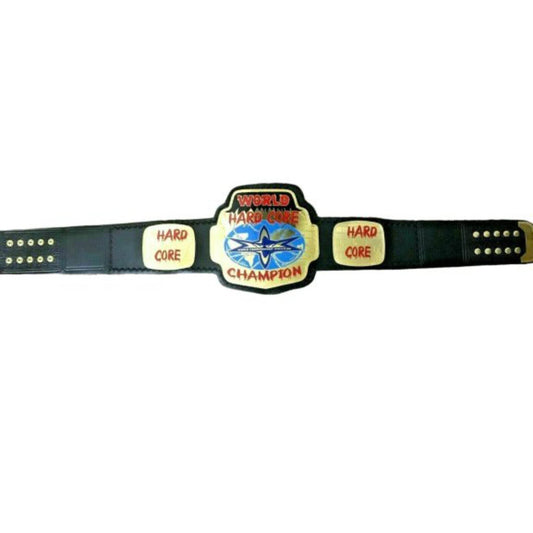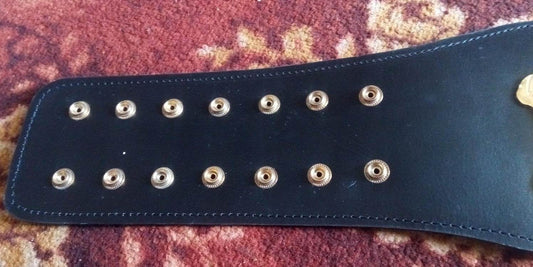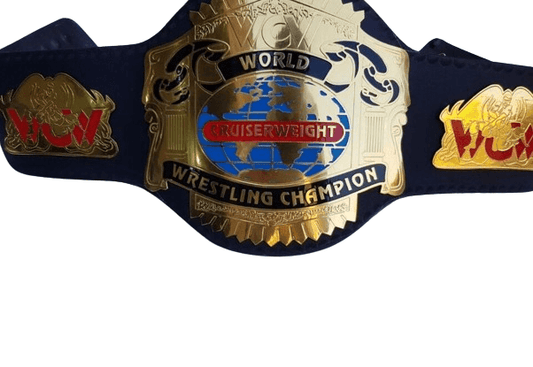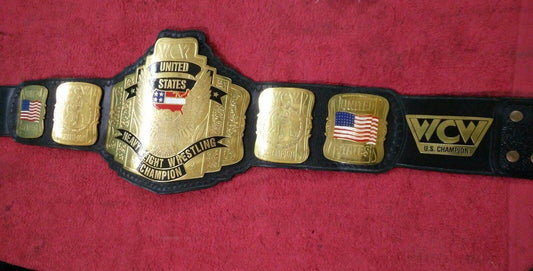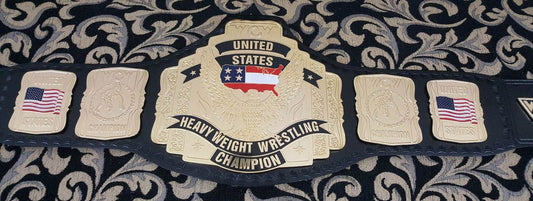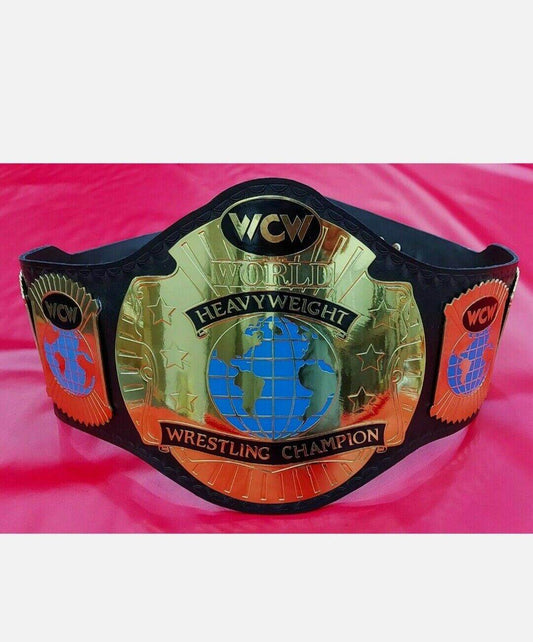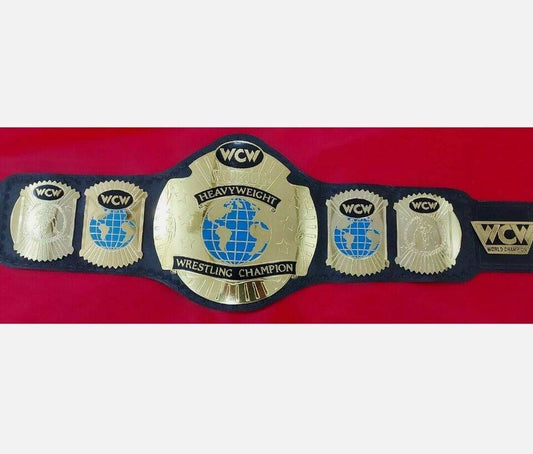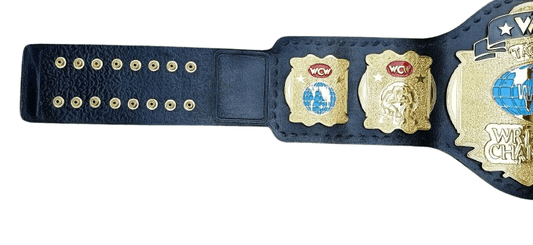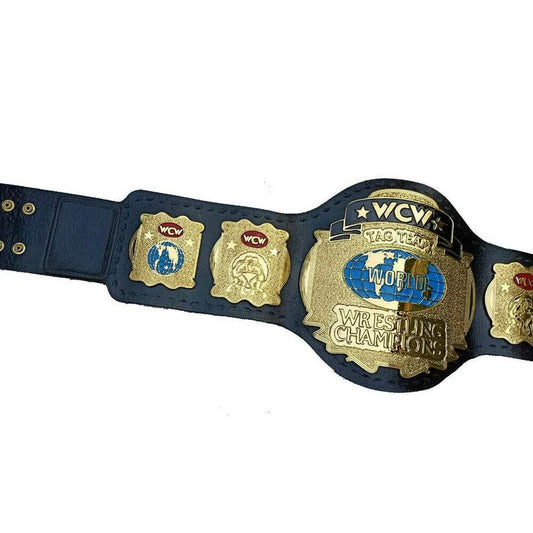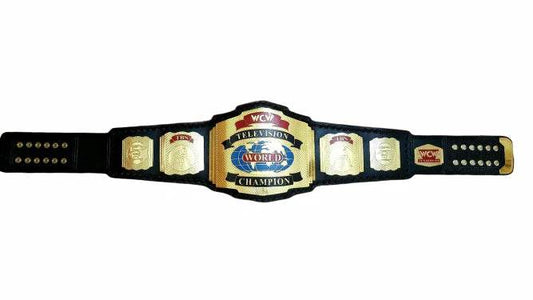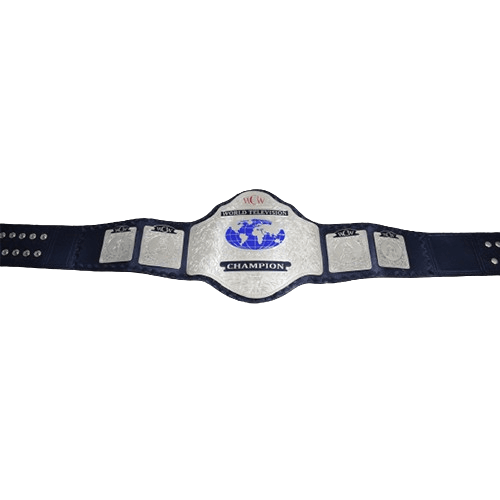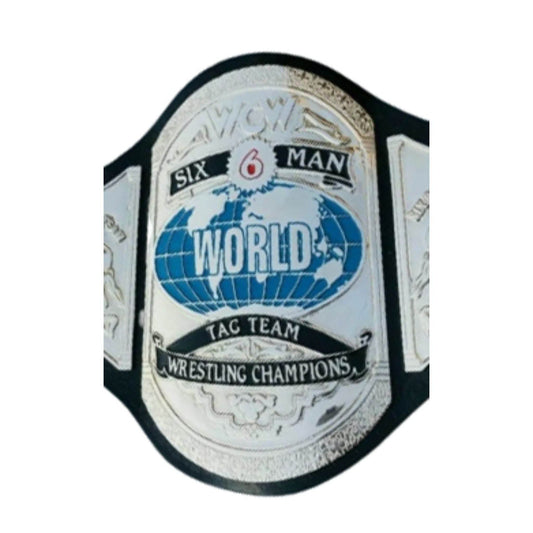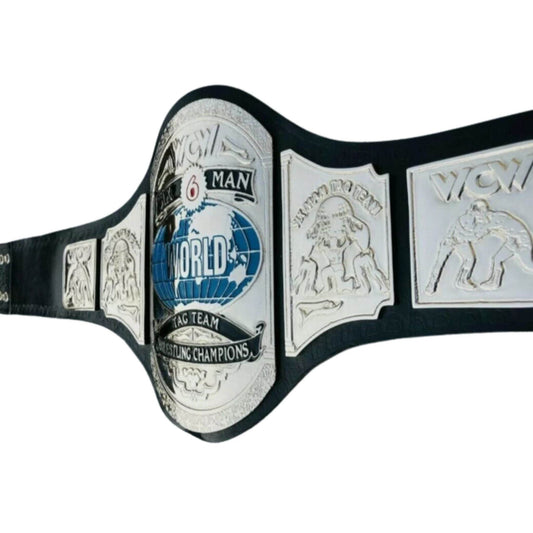-
WCW World Heavyweight Championship Belt Replica Title
Regular price $179.00 USDRegular priceUnit price / per$250.00 USDSale price $179.00 USDSale -
nWo Wolfpac Signature Series Championship Replica Title Belt
4.5 / 5.0
(2) 2 total reviews
Regular price $179.00 USDRegular priceUnit price / per$250.00 USDSale price $179.00 USDSale -
WCW World Television Championship Replica Title Belt
4.5 / 5.0
(2) 2 total reviews
Regular price $149.00 USDRegular priceUnit price / per$200.00 USDSale price $149.00 USDSale -
WCW Hardcore Championship Replica Title Belt
4.5 / 5.0
(2) 2 total reviews
Regular price $149.00 USDRegular priceUnit price / per$200.00 USDSale price $149.00 USDSale -
WCW Cruiserweight Wrestling Championship Belts
4.5 / 5.0
(2) 2 total reviews
Regular price $149.00 USDRegular priceUnit price / per$250.00 USDSale price $149.00 USDSale -
WCW Cruiserweight Wrestling Championship Replica Title Belt
4.5 / 5.0
(2) 2 total reviews
Regular price $149.00 USDRegular priceUnit price / per$200.00 USDSale price $149.00 USDSale -
WCW Six Man Tag Team Championship Replica Belt
4.5 / 5.0
(2) 2 total reviews
Regular price $179.00 USDRegular priceUnit price / per$250.00 USDSale price $179.00 USDSale -
WCW United States Heavyweight Championship Belt
4.5 / 5.0
(2) 2 total reviews
Regular price $149.00 USDRegular priceUnit price / per$250.00 USDSale price $149.00 USDSale -
WCW United States Heavyweight Wrestling Championship Belt
4.5 / 5.0
(2) 2 total reviews
Regular price $149.00 USDRegular priceUnit price / per$250.00 USDSale price $149.00 USDSale -
Wcw World Heavyweight Wrestling Champion Belt 2mm
4.5 / 5.0
(2) 2 total reviews
Regular price $149.00 USDRegular priceUnit price / per$200.00 USDSale price $149.00 USDSale -
Wcw World Heavyweight Wrestling Championship Belt
Regular price $149.00 USDRegular priceUnit price / per$250.00 USDSale price $149.00 USDSale -
WCW World Tag Team Wrestling Championship Belt
4.5 / 5.0
(2) 2 total reviews
Regular price $149.00 USDRegular priceUnit price / per$300.00 USDSale price $149.00 USDSale -
Wcw World Tag Team Wrestling Championship Title Belt
Regular price $149.00 USDRegular priceUnit price / per$250.00 USDSale price $149.00 USDSale -
Wcw World Television Championship Wrestling Title Belt
Regular price $149.00 USDRegular priceUnit price / per$250.00 USDSale price $149.00 USDSale -
WCW World Television Wrestling Replica Championship Belt
4.5 / 5.0
(2) 2 total reviews
Regular price $149.00 USDRegular priceUnit price / per$250.00 USDSale price $149.00 USDSale -
WCW World Six-Man Tag Team Championship Replica Title Belt
4.5 / 5.0
(2) 2 total reviews
Regular price $149.00 USDRegular priceUnit price / per$200.00 USDSale price $149.00 USDSale
Collection: WCW Championship Belts
World Championship Wrestling Belts - WCW Belts - WCW Title Belts - WCW Heavyweight Belt -WCW Championship Belts

The golden era of World Championship Wrestling produced some of the most iconic and revered championship belts in professional wrestling history. When wrestling fans discuss the most beautiful and prestigious title designs ever created, wcw championship belt designs consistently rank among the absolute finest. These magnificent pieces of championship hardware represented more than just wrestling accomplishments – they embodied the rich traditions, fierce competition, and unmistakable Southern wrestling heritage that made WCW a cultural phenomenon throughout the 1980s and 1990s.
From the legendary Big Gold Belt that became synonymous with wrestling excellence to the distinctive television and tag team championships that graced countless memorable matches, wcw title belts established design standards that continue to influence wrestling championship aesthetics today. The craftsmanship, attention to detail, and sheer visual impact of these belts helped elevate WCW programming and created lasting symbols that transcended the wrestling business itself.
The legacy of these championships extends far beyond their active television years. Modern collectors and wrestling enthusiasts recognize WCW belts as essential pieces of wrestling history, representing an era when championship design reached artistic heights that few other promotions have matched. Each belt tells a story of legendary wrestlers, memorable matches, and the unique wrestling culture that flourished in the American South during wrestling's most dynamic period.
Understanding the significance of WCW championship belts requires appreciating both their historical context and their enduring influence on wrestling culture. These weren't simply props or accessories – they were carefully crafted symbols of achievement that commanded respect from wrestlers and fans alike. The weight, materials, and intricate detailing of each championship reflected the prestige and importance that WCW placed on its title holders and championship divisions.
The Magnificent WCW Heavyweight Championships
The crown jewel of WCW's championship collection, the wcw heavyweight belt, represented the pinnacle of professional wrestling achievement for an entire generation of wrestlers and fans. This championship design became the template for wrestling excellence, featuring elaborate gold plating, intricate engravings, and a commanding presence that made every title defense feel like a momentous occasion. The belt's substantial weight and impressive size communicated the gravity of holding WCW's most prestigious championship.
The evolution of the wcw world title belt design reflected WCW's growth from regional territory to national wrestling powerhouse. Early versions featured simpler designs that gradually evolved into more elaborate and sophisticated presentations as the company's profile and budget expanded. Each iteration maintained the core elements that made WCW heavyweight championships instantly recognizable while incorporating refinements that enhanced their visual appeal and perceived value.
Perhaps no championship in wrestling history carries more mystique than the wcw big gold belt, a design so iconic that it transcended wrestling to become a recognized symbol of achievement across multiple entertainment industries. The Big Gold Belt's distinctive design elements – including its elaborate centerpiece, decorative side plates, and unmistakable golden finish – created a championship that looked unlike anything else in professional wrestling. The belt's photogenic qualities made it a natural choice for television close-ups and promotional materials.
The wcw championship belts collection represented a commitment to excellence that extended beyond the heavyweight division. Each championship within the WCW system maintained consistent quality standards and design philosophies that created a cohesive family of titles. This attention to detail across all championship levels helped establish WCW as a promotion that valued presentation and understood the importance of making every championship feel special and important.
The wcw heavyweight championship belt became the most coveted prize in professional wrestling during WCW's peak years, worn by legends like Ric Flair, Hulk Hogan, and Goldberg. The belt's presence elevated every storyline and match in which it appeared, creating an aura of importance that modern wrestling companies still struggle to replicate. Television cameras loved the way light played across the belt's golden surfaces, creating dramatic visual effects that enhanced the spectacle of championship matches.
Credit: Pardip Singh
Defining the Big Gold Legacy
When wrestling historians discuss the most influential championship designs in the sport's history, the big gold wcw belt inevitably dominates the conversation. This legendary championship transcended its original purpose to become a cultural icon that represented excellence, prestige, and the very essence of professional wrestling championship tradition. The belt's design elements created a perfect storm of visual appeal, historical significance, and championship prestige that has never been fully replicated.
The wcw belt that became known as Big Gold featured design elements that drew inspiration from boxing championship traditions while incorporating uniquely wrestling-oriented flourishes. The large central medallion provided ample space for intricate engravings and decorative elements, while the championship's substantial weight gave it a presence that commanded respect from everyone who encountered it. The belt's construction quality exceeded typical wrestling championship standards, reflecting WCW's commitment to creating something truly special.
The wcw world championship belt design philosophy emphasized timeless elegance over trendy elements that might quickly become dated. This approach proved prescient, as the Big Gold design remained visually appealing and relevant throughout multiple decades of wrestling evolution. The belt's classic proportions and sophisticated decorative elements created a championship that looked equally impressive in 1985 and 2001, demonstrating the enduring power of superior design principles.
The cultural impact of the wcw world heavyweight belt extended far beyond wrestling programming, appearing in music videos, movies, and various forms of popular media. Hip-hop artists particularly embraced the belt as a symbol of success and achievement, helping to establish it as a recognizable status symbol that transcended wrestling fandom. This crossover appeal helped cement the Big Gold Belt's position as one of the most recognizable championship designs in entertainment history.
United States Championship Excellence
The wcw us championship belt represented WCW's commitment to creating prestigious mid-card championships that carried genuine importance and visual appeal. Unlike many promotions that treated secondary championships as afterthoughts, WCW invested significant effort in making the United States Championship feel like a legitimate stepping stone to main event competition. The belt's design incorporated patriotic elements that honored its American heritage while maintaining the sophisticated aesthetic standards established by WCW's other championships.
Design elements of the wcw us title belt included stars, eagles, and other American imagery that created a distinctly patriotic presentation without becoming overly literal or cartoonish. The belt struck an effective balance between thematic elements and wrestling championship traditions, creating a piece that honored American values while maintaining the dignity expected from a major wrestling championship. This thoughtful approach to thematic design helped establish the US Championship as a respected title within WCW's championship hierarchy.
The wcw united states championship belt served as a launching pad for numerous wrestlers who would eventually achieve main event success in WCW and other promotions. The championship's prestigious appearance and the respect it commanded from wrestlers and fans alike made US Championship victories feel meaningful and career-defining. This perception of importance helped attract top-tier talent to compete for the title, creating memorable feuds and matches that elevated the entire championship division.
Throughout its history, the United States Championship belt maintained design consistency that helped build brand recognition and championship prestige over time. Unlike some wrestling championships that underwent frequent design changes, the WCW US title's stable visual identity allowed fans to develop emotional connections with the belt itself. This consistency contributed to the championship's perceived legitimacy and helped establish it as an integral part of WCW's championship landscape.
Tag Team Championship Dynamics
The wcw tag team championship belt design reflected WCW's recognition that tag team wrestling deserved championship presentations that matched the excitement and athleticism of the division. Rather than creating scaled-down versions of singles championships, WCW developed unique design elements specifically tailored to celebrate tag team achievement. These belts featured distinctive styling that made them instantly recognizable as tag team prizes while maintaining the quality standards expected from WCW championships.
The wcw tag team belts were crafted as matching pairs that complemented each other while allowing each champion to carry a complete championship rather than sharing a single belt between partners. This approach demonstrated WCW's understanding that tag team champions deserved individual recognition for their shared achievement. The belt design incorporated elements that celebrated partnership and teamwork while maintaining the individual prestige that made championship ownership meaningful.
Evolution of the wcw world tag team championship belt design reflected changes in WCW's tag team division emphasis and the company's overall championship presentation philosophy. Different eras of WCW programming saw variations in tag team championship design, with some periods featuring more elaborate presentations while others emphasized functional simplicity. These design changes often corresponded with shifts in WCW's creative direction and the prominence given to tag team wrestling within the company's programming structure.
The wcw world television championship belt represented an innovative approach to wrestling championship hierarchy, creating a title specifically designed for television programming and regular defenses. This championship concept reflected WCW's understanding of television's importance in building wrestling stars and maintaining audience engagement. The TV championship's unique positioning within WCW's title structure created opportunities for exciting weekly programming and helped establish wrestlers who might not have received spotlight opportunities in traditional championship divisions.
Television Championship Innovation
The concept behind the wcw television championship belt demonstrated WCW's forward-thinking approach to wrestling entertainment and championship booking. By creating a championship specifically designed for regular television defenses, WCW established a title that served both storyline purposes and practical programming needs. The TV championship provided guaranteed championship action for weekly programming while creating a distinct category of competition that attracted wrestlers seeking regular television exposure.
Design elements of the wcw tv belt reflected its unique position within WCW's championship hierarchy, incorporating visual elements that distinguished it from both heavyweight and mid-card championships. The belt's appearance communicated its television-specific purpose while maintaining the quality and prestige expected from WCW championship designs. This careful balance helped establish the Television Championship as a legitimate title rather than a novelty prize.
The wcw world television championship belt booking philosophy emphasized frequent defenses and exciting matches that showcased wrestling talent while advancing storylines. This approach created natural opportunities for surprise victories, upset finishes, and dramatic championship changes that kept television audiences engaged and invested in weekly programming. The championship's active booking style helped establish it as one of WCW's most entertaining and unpredictable divisions.
Throughout its existence, the Television Championship served as a proving ground for wrestlers transitioning between different levels of WCW's roster hierarchy. The title's regular defense schedule and television prominence provided wrestlers with opportunities to demonstrate their skills and connect with audiences in ways that might not have been possible through other championship divisions. This developmental aspect of the TV championship helped create future stars while providing immediate entertainment value for WCW programming.
NWO Era Championship Dynamics
The arrival of the New World Order faction created unique dynamics around wcw nwo championship belt presentations and championship storylines. The NWO's rebellious attitude toward WCW establishment extended to their relationship with traditional championship structures, creating tension and controversy that enhanced the dramatic appeal of championship matches involving NWO members. This faction's influence on championship presentation demonstrated how wrestling groups could impact the perception and importance of title belts beyond simple match outcomes.
The intersection of NWO storylines with WCW championship booking created some of the most memorable championship angles in wrestling history. When NWO members held WCW championships, the visual contrast between the faction's black and white aesthetic and the traditional gold championship designs created powerful imagery that enhanced the group's outsider status. These visual elements contributed to storylines that blurred the lines between legitimate competition and sports entertainment spectacle.
Championship matches involving NWO members often featured unique stipulations and interference that added unpredictability to title defenses. This booking approach enhanced the dramatic appeal of championship storylines while creating uncertainty about traditional wrestling conventions. The NWO's impact on championship presentation demonstrated how faction dynamics could enhance rather than diminish the importance of championship belts within wrestling storylines.
The legacy of NWO-era championship storylines continues to influence modern wrestling's approach to faction-based championship booking. The success of these angles demonstrated that championship belts could serve multiple storytelling purposes simultaneously, functioning as both legitimate competitive prizes and dramatic props that enhanced character development and storyline progression.
Replica Market and Collector Culture
The demand for wcw replica belt versions exploded during WCW's peak popularity and has remained strong among wrestling memorabilia collectors. At WWFBelt.com High-quality replica belts allow fans to own pieces that closely approximate the appearance and feel of television-used championships while remaining accessible to collectors with various budget levels. The replica market has evolved to include multiple quality tiers, from basic commemorative pieces to museum-quality reproductions that capture every detail of the original designs.
Premium replica wcw belts often feature metal construction, leather straps, and attention to detail that closely replicates the television versions. These high-end replicas serve as centerpieces for serious wrestling collections and represent significant investments for dedicated fans. The availability of multiple quality levels ensures that WCW championship replicas can serve both casual fans seeking affordable memorabilia and serious collectors pursuing authentic reproductions.
The wcw championship belt for sale market encompasses both vintage original pieces and modern replica productions. Original belts that appeared on television or were used in promotional activities command premium prices due to their historical significance and authentic provenance. These pieces represent the pinnacle of WCW championship collecting, attracting serious collectors who value historical authenticity above all other factors.
Market dynamics for wcw championship belt replica pieces reflect the enduring popularity of WCW championship designs among wrestling fans. Strong collector demand has encouraged manufacturers to continuously improve replica quality and accuracy, resulting in reproductions that capture the essence of original WCW championships while remaining accessible to average collectors. This healthy replica market helps preserve the visual legacy of WCW championships for future wrestling generations.
Investment and Collecting Strategies
The wcw replica belts market offers multiple entry points for collectors interested in WCW championship memorabilia. Beginning collectors often start with basic replica versions before upgrading to higher-quality reproductions as their collecting interests and budgets develop. This progression approach allows collectors to develop appreciation for WCW championship design elements while building collections that can grow more sophisticated over time.
Advanced collectors pursuing wcw title belt authenticity often focus on pieces with documented provenance or unique characteristics that distinguish them from standard replica productions. These collectors understand that authentic pieces represent finite resources that become more valuable as time passes and original examples become increasingly scarce. The combination of historical significance and limited availability makes authentic WCW championship pieces attractive long-term investments.
The wcw title belts for sale market includes seasonal fluctuations that savvy collectors can leverage to acquire pieces at favorable prices. Wrestling memorabilia markets often see increased activity around anniversary dates, major wrestling events, and during periods of renewed interest in WCW history. Understanding these market cycles helps collectors time their acquisitions to maximize value and selection opportunities.
Investment considerations for wcw world heavyweight championship belt for sale pieces include condition assessment, authenticity verification, and market timing factors. Serious collectors often work with authentication services and established dealers who specialize in wrestling memorabilia to ensure they're acquiring legitimate pieces at fair market values. This professional approach helps protect collectors from reproduction pieces being misrepresented as originals while ensuring they receive appropriate value for their investments.
Comparative Analysis and Legacy Impact
The ongoing debate surrounding big gold belt wwe vs wcw presentations highlights the enduring influence of WCW championship design on modern wrestling. When WWE acquired WCW assets, they inherited championship designs that had become synonymous with wrestling excellence, creating interesting dynamics around how these legacy pieces would be integrated into WWE programming. The transition of WCW championship designs into WWE usage demonstrated the universal appeal and recognition value of superior championship aesthetics.
Historical analysis of wcw heavyweight championship replica belt collecting trends reveals consistent appreciation for pieces that maintain authentic design elements and construction quality. Collectors particularly value replicas that capture the weight, proportions, and visual details that made original WCW championships so impressive. This attention to authenticity reflects the respect that wrestling fans maintain for WCW championship design standards even decades after the promotion's conclusion.
The influence of wcw world heavyweight championship replica belt designs continues to appear in modern wrestling championship presentations across multiple promotions. Contemporary championship designers frequently reference WCW design elements when creating new belts, demonstrating the lasting impact of WCW's commitment to championship excellence. This ongoing influence ensures that WCW championship aesthetics remain relevant and influential within current wrestling culture.
The preservation of WCW championship legacy through replica production and collector activity helps maintain awareness of these design achievements among new wrestling generations. Young wrestling fans who never experienced WCW programming can still appreciate the artistry and craftsmanship that made these championships special through high-quality replica pieces and historical documentation. This cultural preservation activity ensures that WCW championship design excellence continues to inspire and influence wrestling presentation standards.
Authentication and Quality Assessment
Professional authentication of original WCW championship pieces requires expertise in multiple areas, including manufacturing techniques, materials analysis, and historical documentation. Authentic pieces feature specific construction details, finishing techniques, and wear patterns that distinguish them from replica productions. Understanding these authentication markers helps collectors make informed decisions when pursuing original WCW championship pieces for their collections.
Quality assessment for replica WCW championships involves evaluating accuracy, construction materials, and overall craftsmanship compared to original pieces. The best replica belts feature metal construction, genuine leather straps, and attention to detail that closely approximates television-used championships. Collectors who understand quality indicators can select replica pieces that provide maximum satisfaction and display appeal while staying within their collecting budgets.
The evolution of replica manufacturing techniques has resulted in WCW championship reproductions that achieve unprecedented accuracy and quality levels. Modern replica producers use advanced manufacturing methods and materials that allow them to create pieces that capture the essence of original WCW championships while incorporating improvements in durability and consistency. These manufacturing advances benefit collectors by providing access to high-quality WCW championship replicas that serve both display and educational purposes.
Market trends in WCW championship collecting continue to favor pieces that demonstrate superior craftsmanship and authentic design elements. Collectors increasingly appreciate replicas that maintain historical accuracy while incorporating modern manufacturing improvements that enhance durability and appearance. This emphasis on quality over quantity reflects the maturation of wrestling memorabilia collecting and the sophisticated standards that serious collectors apply to their acquisition decisions.
Frequently Asked Questions (FAQs) about WCW Championship Belts:
What was the main WCW World Heavyweight Championship belt?
The iconic "Big Gold Belt" (used 1986–2001), originally from the NWA, became WCW's top title until WWE bought WCW in 2001.
Did WCW create the Big Gold Belt?
No – it was designed by Crumrine Jewelers in 1986 for the NWA. WCW adopted it in 1991 after splitting from the NWA.
What other titles did WCW have?
Cruiserweight, U.S. Heavyweight, TV Title, Tag Team, and Women's Championships – each with unique designs.
Why is the Big Gold Belt so famous?
Its lavish design (gold plates, intricate detailing) and association with legends like Flair, Sting, and Goldberg made it wrestling's most prestigious title.
Did WWE use WCW belts after buying WCW?
Yes – The Big Gold Belt became WWE's World Heavyweight Championship (2002–2013). WCW's U.S. Title also returned in 2003 and is still active today.
Are original WCW belts rare?
Extremely – Few authentic ringside belts exist. Most "WCW" belts sold now are replicas or WWE-made recreations.
Where can I buy a WCW replica belt?
WWE Shop sells retro replicas (e.g., "Big Gold Belt," WCW U.S. Title). Independent makers like Fandu Belts offer high-end versions.
How much does an authentic WCW Big Gold Belt cost?
*Auction prices range from $20,000 to $100,000+ for ringside-used belts. Replicas cost $400–$1,500.*
What materials were used in WCW belts?
Ringside belts: Solid brass/gold plating, leather straps. Replicas: Zinc alloy with synthetic leather.
Who held the WCW Title the longest?
*Ric Flair (8 reigns, 1,117+ combined days). Hulk Hogan (6 reigns) and Goldberg (1 reign, 174 days) are also iconic.*
Was the WCW Championship heavier than WWE's?
Yes – The Big Gold weighed 12–15 lbs, while WWE's Attitude Era belt was ~8 lbs.
What happened to WCW belts after 2001?
WWE acquired all physical titles. Some were destroyed; others appear in documentaries or WWE's archives.
Did WCW have custom belts like WWE?
*Rarely – Exceptions: Hulk Hogan's "Hollywood" title (1996, nWo spray-paint vandalism) and Diamond Dallas Page's custom plate (1999).*
How to spot a fake WCW replica?
Check for: Misspelled text, lightweight materials, lack of "Crumrine" engraving, and poor leather quality.
Why did WCW's U.S. Title survive in WWE?
*Its legacy (dating to 1975) and fan nostalgia made it a viable mid-card title. WWE revived it in 2003.*
What was the WCW Cruiserweight Title?
*A division-focused belt (1991–2001) for wrestlers under 220 lbs, held by stars like Rey Mysterio and Chris Jericho.*
Are WCW Tag Team belts valuable?
Authentic sets sell for $15,000–$40,000. Replicas are scarce – WWE rarely reproduces them.
Did WCW use the Big Gold Belt for women?
*No – The WCW Women's Championship (1996–1997) had a unique design but was short-lived.*
What was the most controversial WCW belt moment?
*Eric Bischoff smashing the Big Gold Belt with a hammer (1998) to introduce a new "spinner-style" title (later scrapped).*
Can I customize a WCW-style replica?
Yes – Companies like Belts By Dan offer custom engravings, side plates, and strap colors for retro designs.

